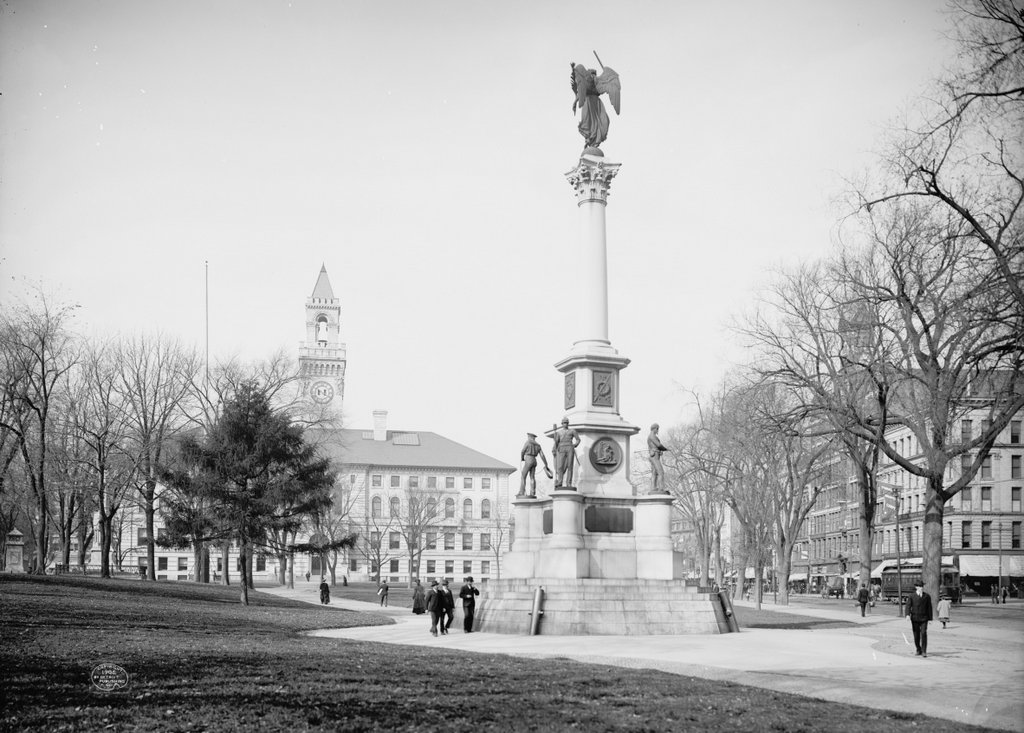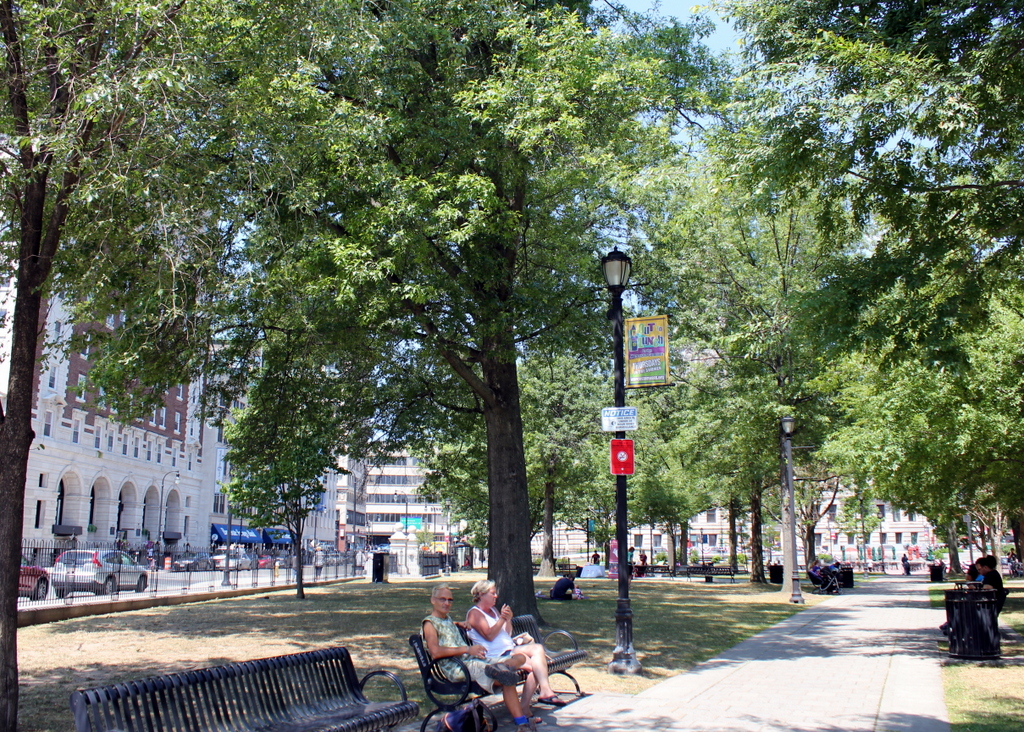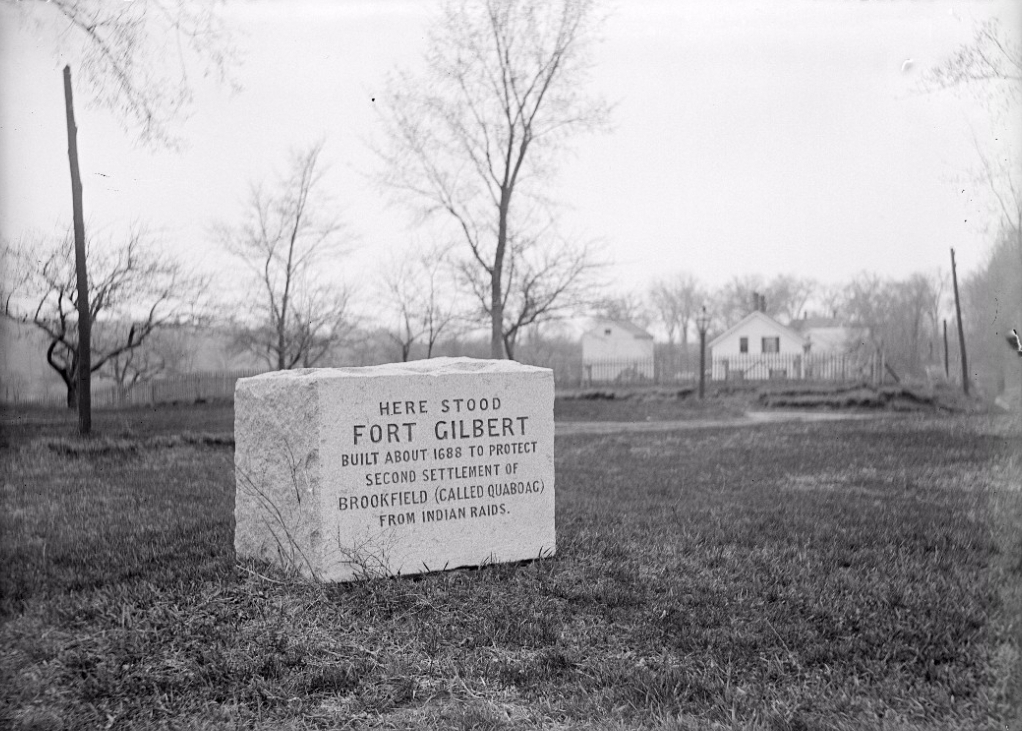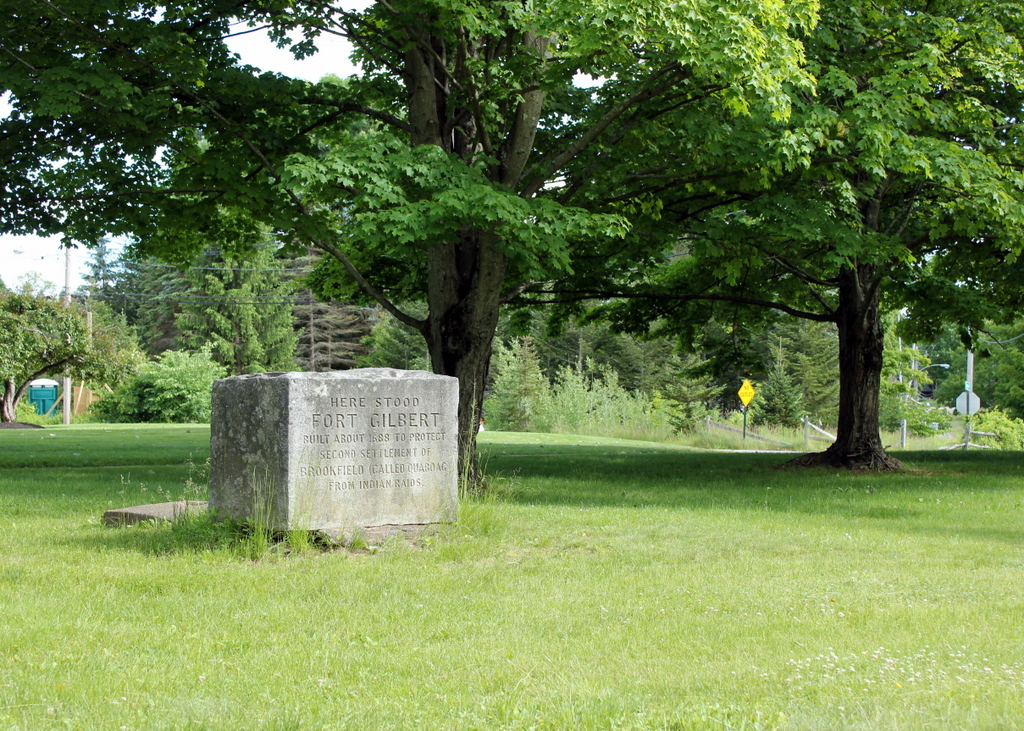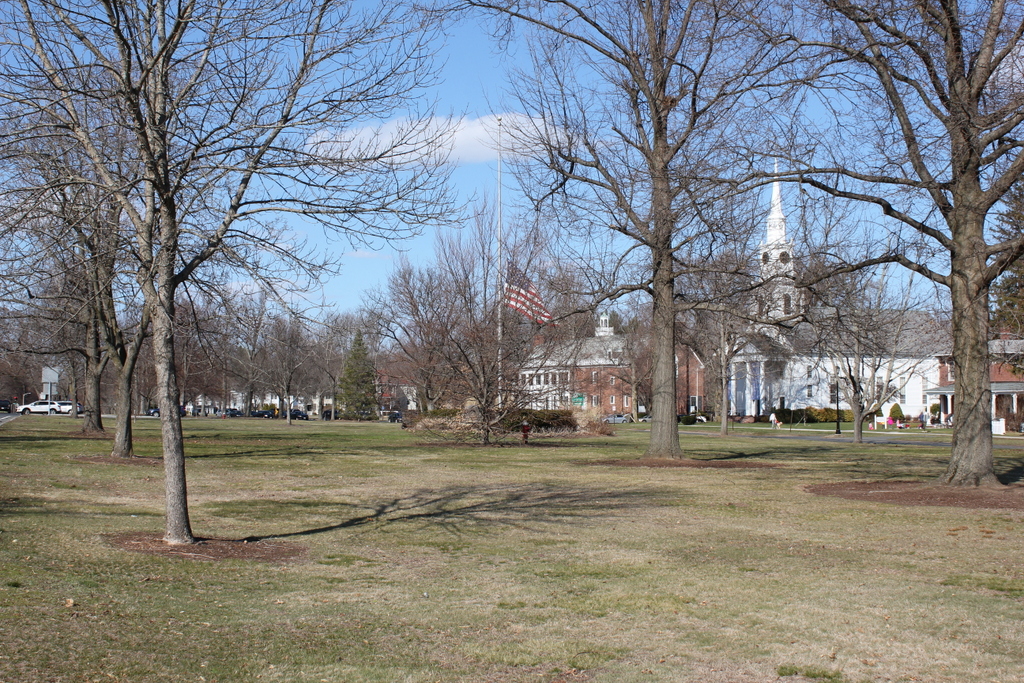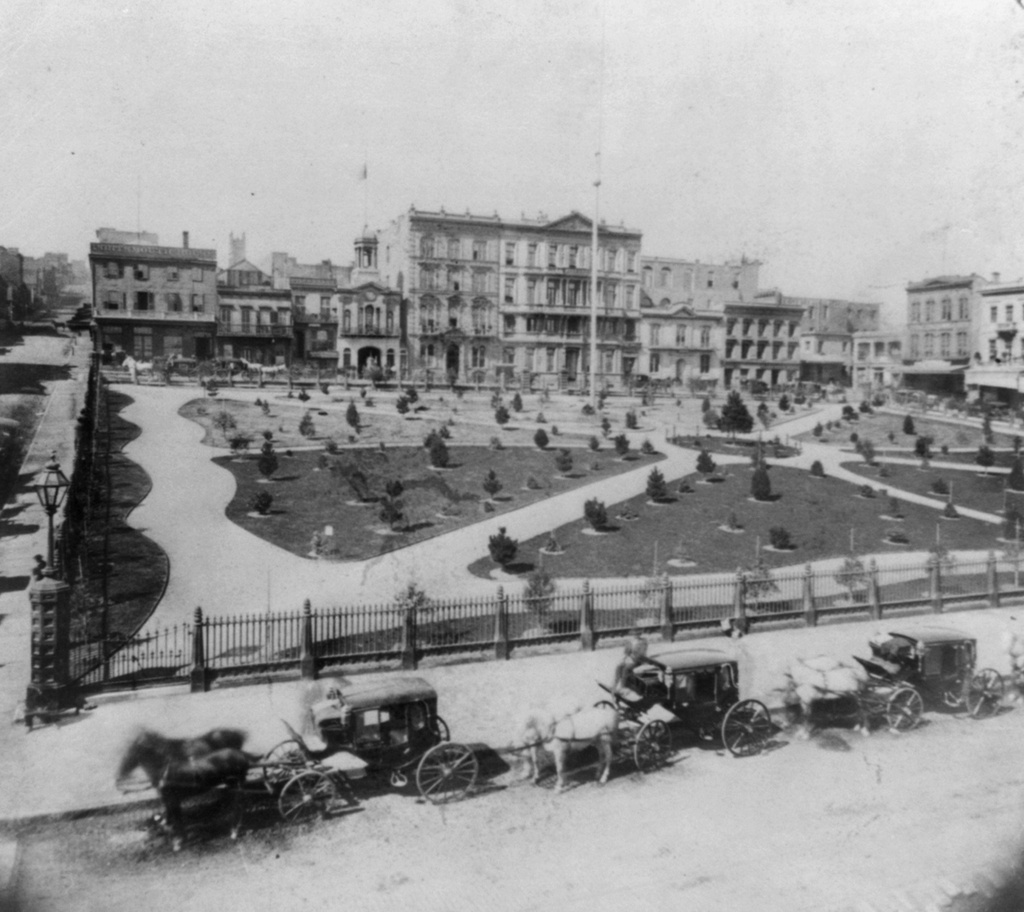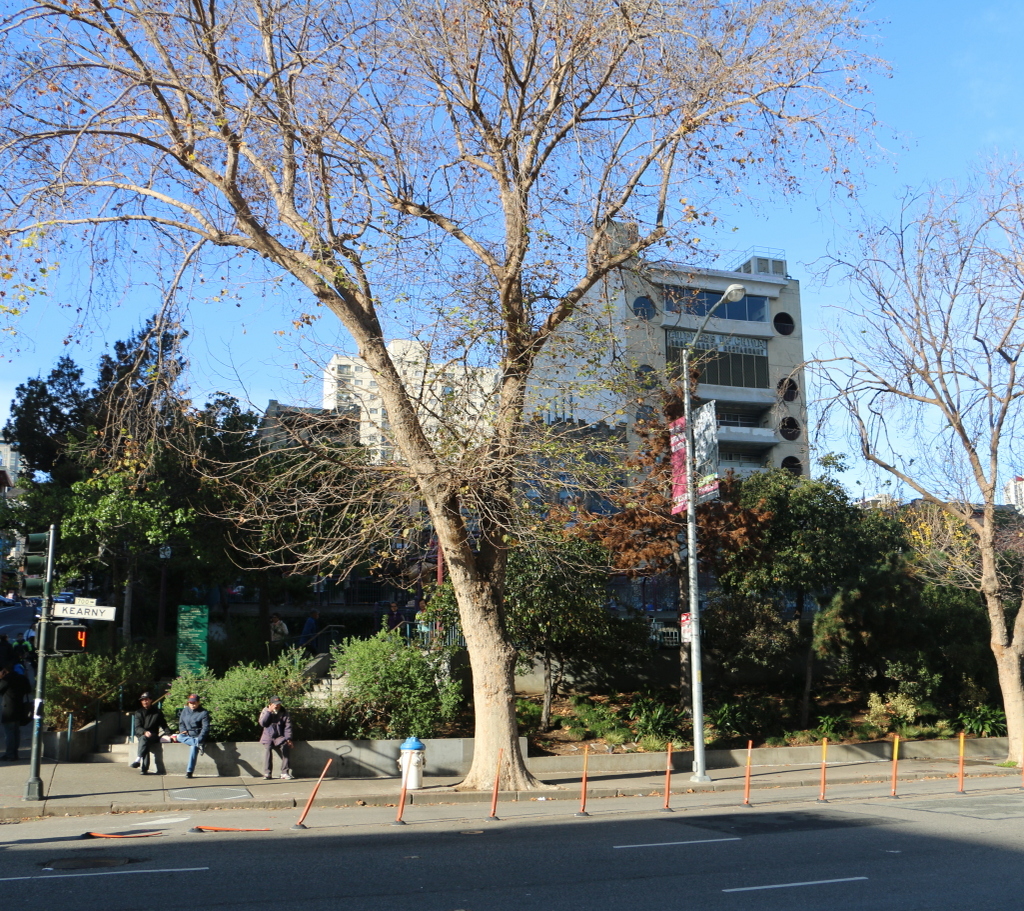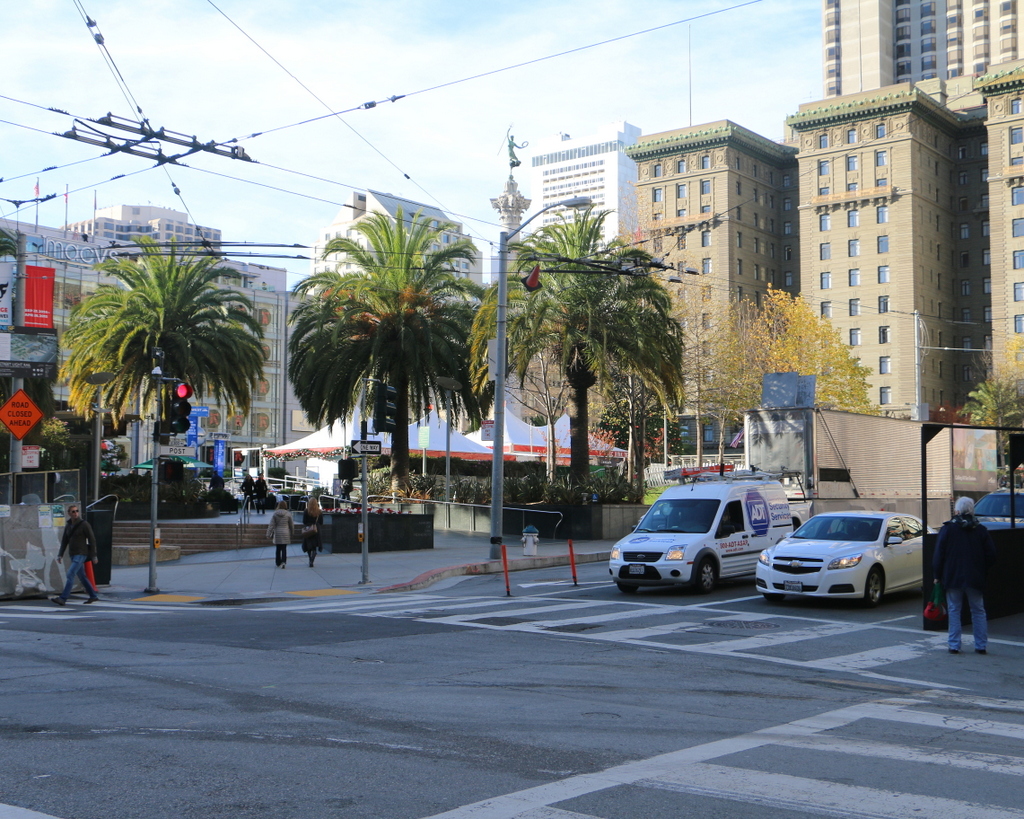Another view of the Worcester Common, taken looking west from the corner of Church and Front Streets, around 1906. Image courtesy of the Library of Congress, Detroit Publishing Company Collection.
The Common in 2016:
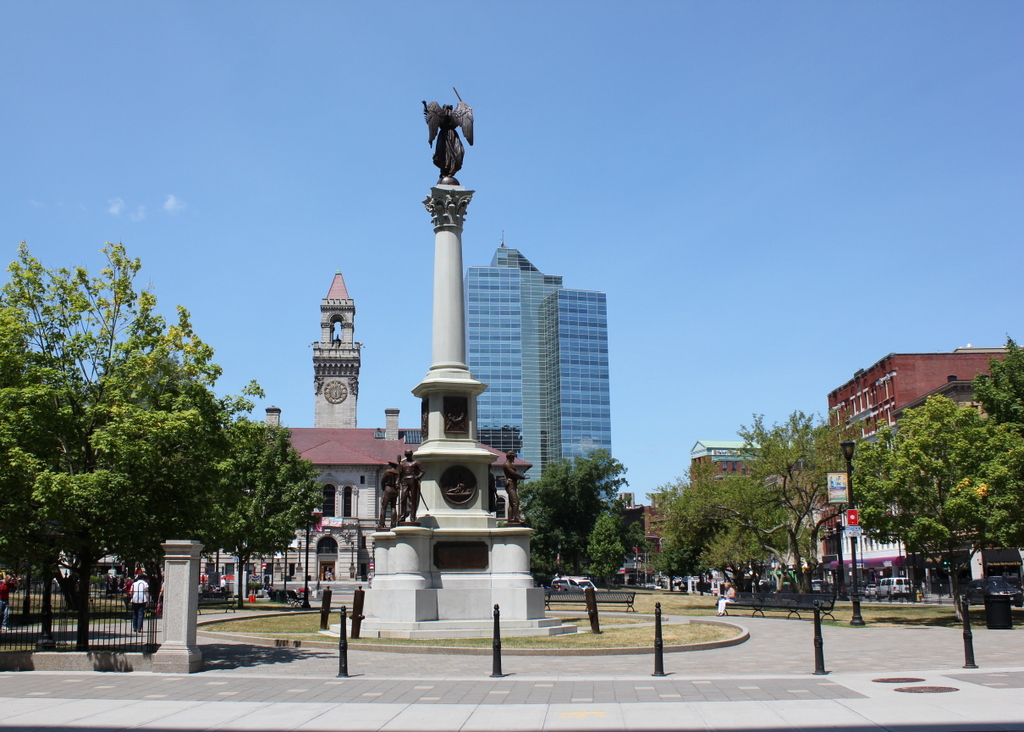
Taken from the northeast corner of the Common, on the other end of Church Street from an earlier post, this view shows the Soldiers’ Monument in the center, with City Hall to the left and Front Street to the right. The monument is the oldest feature in the first photo; it was dedicated in 1874 in honor of Worcester’s fallen soldiers and sailors of the Civil War, and was designed by prominent sculptor Randolph Rogers.
Along with the monument, several other buildings remain from the first photo, including the 1898 City Hall. On the far right, partially hidden by trees, are two 19th century commercial buildings. Both were designed by Fuller & Delano, a Worcester-based firm that was responsible for many other significant buildings in the city. The tall red brick building is the Chase Building, which was built in 1886 and, although the top floors were later altered, it is still standing. To the right of it, at the corner of Commercial Street, is the Ransom C. Taylor Block, built around 1897.
Today, the only particularly obvious change to this scene is the Worcester Plaza building in the distance. Originally built as the Worcester County National Bank Tower, it was completed in 1974, and is tied for the record of the tallest building in the city.

